| Resource Name | Description | Date Added | Resource Link |
|---|---|---|---|
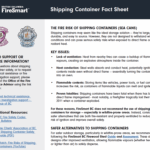 |
Shipping containers may seem like the ideal storage solution — they’re large, durable, and easy to source. However, they are not designed to withstand wildfire conditions and can pose serious... | 09/23/25 | View |
 |
This guide outlines practical, easy-to-follow tips to help you build and maintain a wildfire-resilient deck—from the materials you use to how you manage the space underneath. Every action makes a... | 07/16/25 | View |
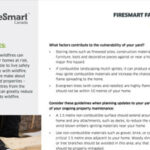 |
Living where wildfires can occur puts our homes at risk, but it is possible to live safely and resiliently with wildfire. The choices we make about our homes and properties... | 07/13/21 | View |
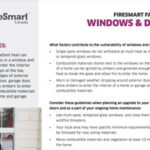 |
Flames and radiant heat can break the glass in a window and allow fire to enter the interior of a home. Gaps at the top, bottom and edges of exterior... | 07/13/21 | View |
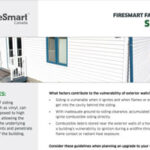 |
Some types of siding materials, such as vinyl, can melt when exposed to high temperatures, allowing the fire to reach the underlying wall components and penetrate the interior of the... | 07/13/21 | View |
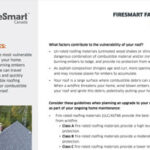 |
The roof is the most vulnerable component of your home. Sparks and burning embers from a wildfire can travel long distances and quickly ignite flammable roofing material and/or combustible debris... | 07/13/21 | View |
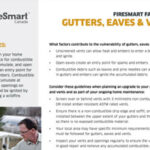 |
The gutters on your home provide a place for combustible debris to accumulate, and open eaves create an entry point for sparks and embers. Combustible debris can accumulate at the... | 07/13/21 | View |
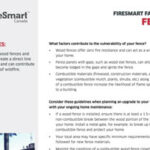 |
Combustible wood fences and boardwalks create a direct line to your home and can contribute to the spread of wildfire. | 07/13/21 | View |
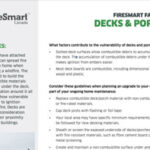 |
Many homes have attached decks, which can spread fire directly to the home when ignited during a wildfire. The materials used to build the deck, combustible materials stored on and... | 07/13/21 | View |
 |
The BC Building Code (BCBC) is a provincial regulation that governs how new construction, building alterations, repairs and demolitions are completed. This code establishes minimum requirements for safety, health, accessibility,... | 02/11/19 | View |

Shipping Container Fact Sheet
Shipping containers may seem like the ideal storage solution — they’re large, durable, and easy to source. However, they are not designed to withstand wildfire...

Wildfire-Resilient Decks Guide
This guide outlines practical, easy-to-follow tips to help you build and maintain a wildfire-resilient deck—from the materials you use to how you manage the space...

Yard
Living where wildfires can occur puts our homes at risk, but it is possible to live safely and resiliently with wildfire. The choices we make...

Windows & Doors
Flames and radiant heat can break the glass in a window and allow fire to enter the interior of a home. Gaps at the top,...

Siding
Some types of siding materials, such as vinyl, can melt when exposed to high temperatures, allowing the fire to reach the underlying wall components and...

Roof
The roof is the most vulnerable component of your home. Sparks and burning embers from a wildfire can travel long distances and quickly ignite flammable...

Gutters, Eaves & Vents
The gutters on your home provide a place for combustible debris to accumulate, and open eaves create an entry point for sparks and embers. Combustible...

Fences
Combustible wood fences and boardwalks create a direct line to your home and can contribute to the spread of wildfire.

Factsheet: Decks and Porches
Many homes have attached decks, which can spread fire directly to the home when ignited during a wildfire. The materials used to build the deck,...

BC Building Code 2024
The BC Building Code (BCBC) is a provincial regulation that governs how new construction, building alterations, repairs and demolitions are completed. This code establishes minimum...